A lot of marketing jargon can be confusing. What you need is a point by point breakdown of how each of these programmatic elements is different. Something you could clearly explain at a meeting.
Let’s comb through what makes each of these terms special in the programmatic advertising space.
Here’s the outline of what we’ll cover:
- Programmatic Direct vs Real-Time Bidding (RTB) Definition
- The Biggest Difference Between Programmatic Direct & Real-Time Bidding
- Rules of Programmatic Direct
- Types of Programmatic Direct
- Elements of Real-Time Bidding
- 2 Types of Real-Time Bidding
- 4 Types of Programmatic Ad Deals
- TL;DR – What Have We Learned
Programmatic Direct vs Real-Time Bidding (RTB) Definition
What is Programmatic Direct?
Programmatic Direct is a term used to describe the process of automating a direct sale of guaranteed advertising between an advertiser and a publisher.
What is Real-Time Bidding (RTB)?
Real-Time Bidding is a term used to describe the buying and selling of online ad inventory that happens through automated auctions in real-time.
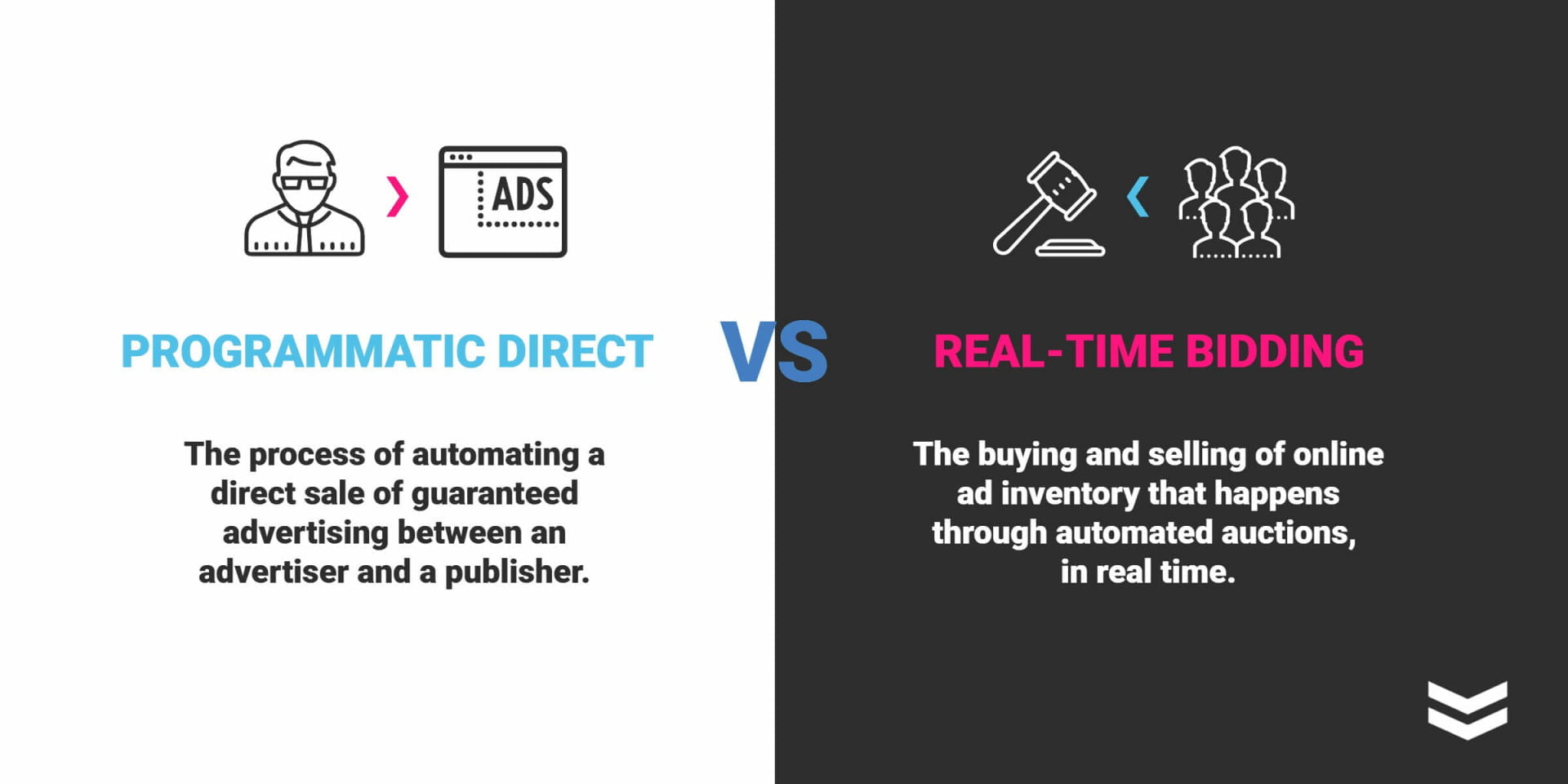
The Biggest Difference Between Programmatic Direct & Real-Time Bidding
Both of these functions operate in the programmatic advertising space, using modern technology to buy and sell ad inventory. However, the major difference is that RTB advertising uses an auction model, while Programmatic Direct uses a non-auction model.
That’s why you should always ask – is advertising inventory being auctioned?
Let’s break down the differences even more!
Photo by David Ballew on Unsplash
Rules of Programmatic Direct
For advertising to fall into this category, it needs to follow three basic rules.
#1: The Process Must Be Automated
A direct sale using programmatic technology is automated and uses transactional and delivery automation to be highly effective.
Direct sales were made using old school telephone conversations, spreadsheets, and mails to negotiate the deal in the past. Programmatic Direct completely automates this process.
#2: The Sale Must Be Direct
#3: The Advertising Must Be Guaranteed
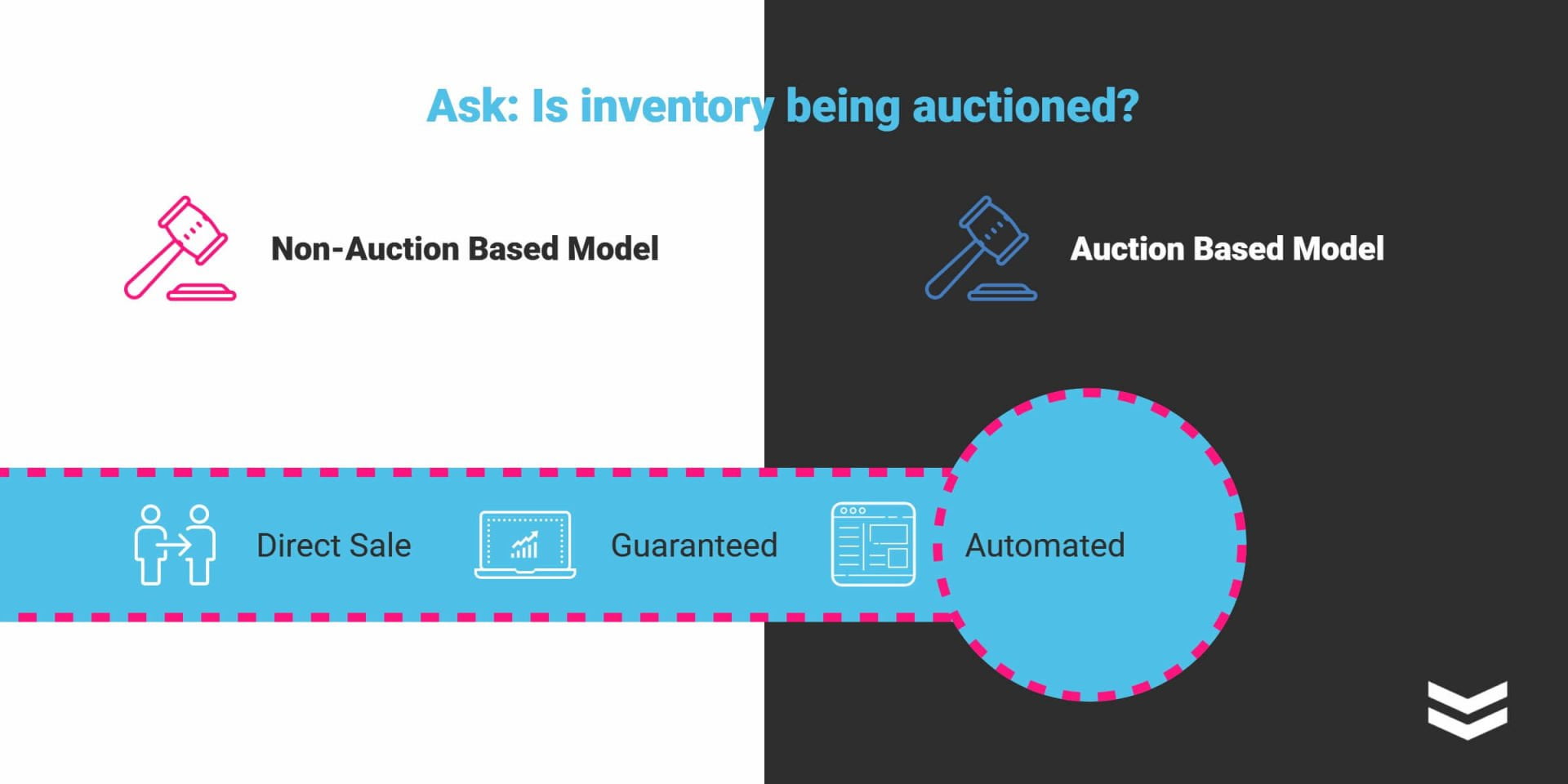
Types of Programmatic Direct
Type 1: Programmatic Guaranteed
Type 2: Preferred Deal
This is quite similar to how a private marketplace works, and advertisers get access to first looks before an agreement is struck.
So, Programmatic Direct uses a non-auction model with fixed pricing and a guaranteed ad inventory purchase.
Photo by Sebastian Herrmann on Unsplash
Elements of Real-Time Bidding
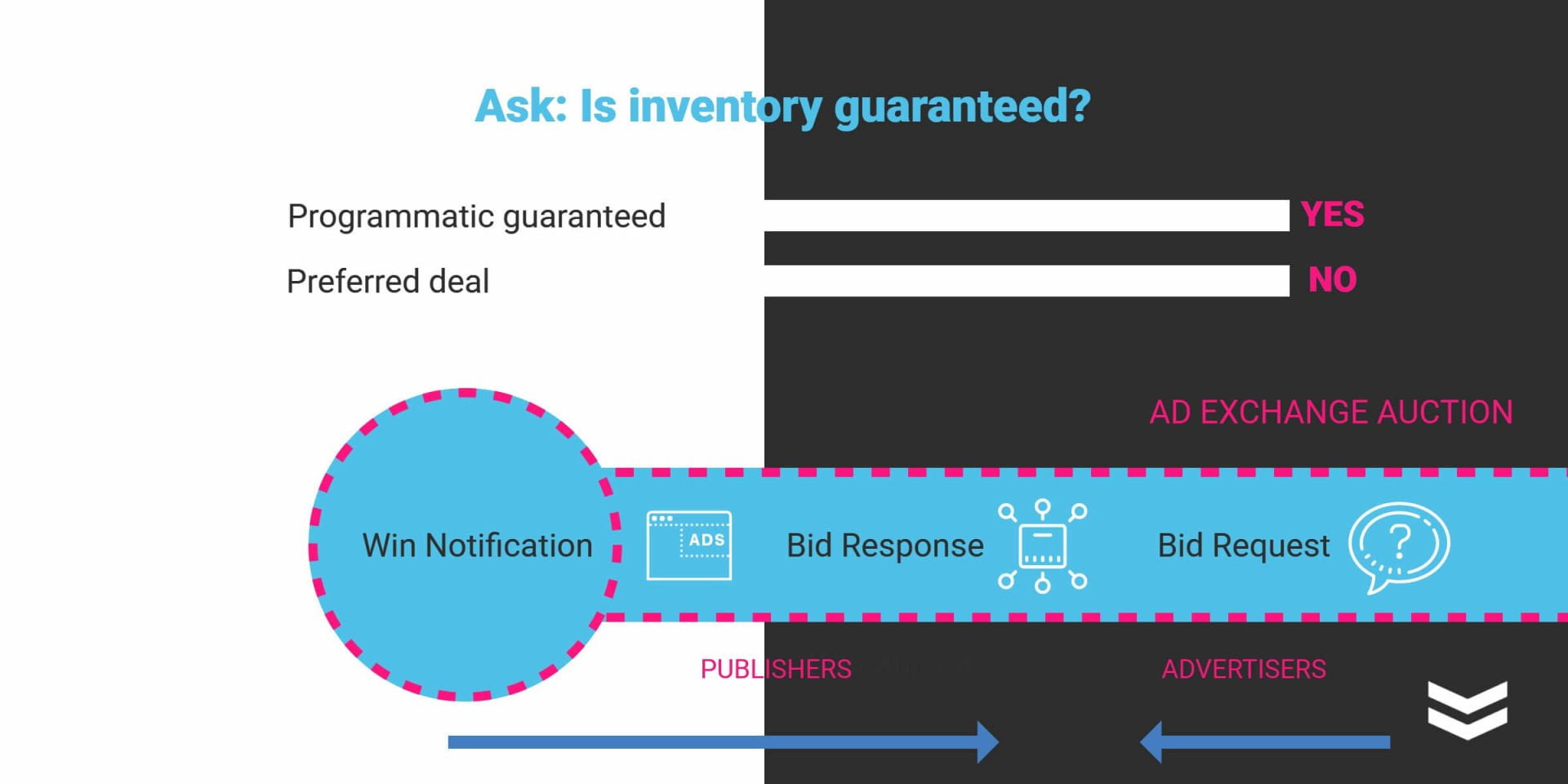
#1: The Advertisers
#2: The Publishers
#3: The Ad Exchange
An ad exchange connects the DSPs (advertisers) and SSPs (publishers) with each other. Real-time auctions are run as people visit websites all over the net. Auctions take place in milliseconds, matching the right ad with the right ad space, based on preset parameters.
The advertiser gets the best possible space within their ad budget. The publisher gets the highest possible bid on offer from the range of advertisers in that moment. Everyone wins!
2 Types of Real-Time Bidding
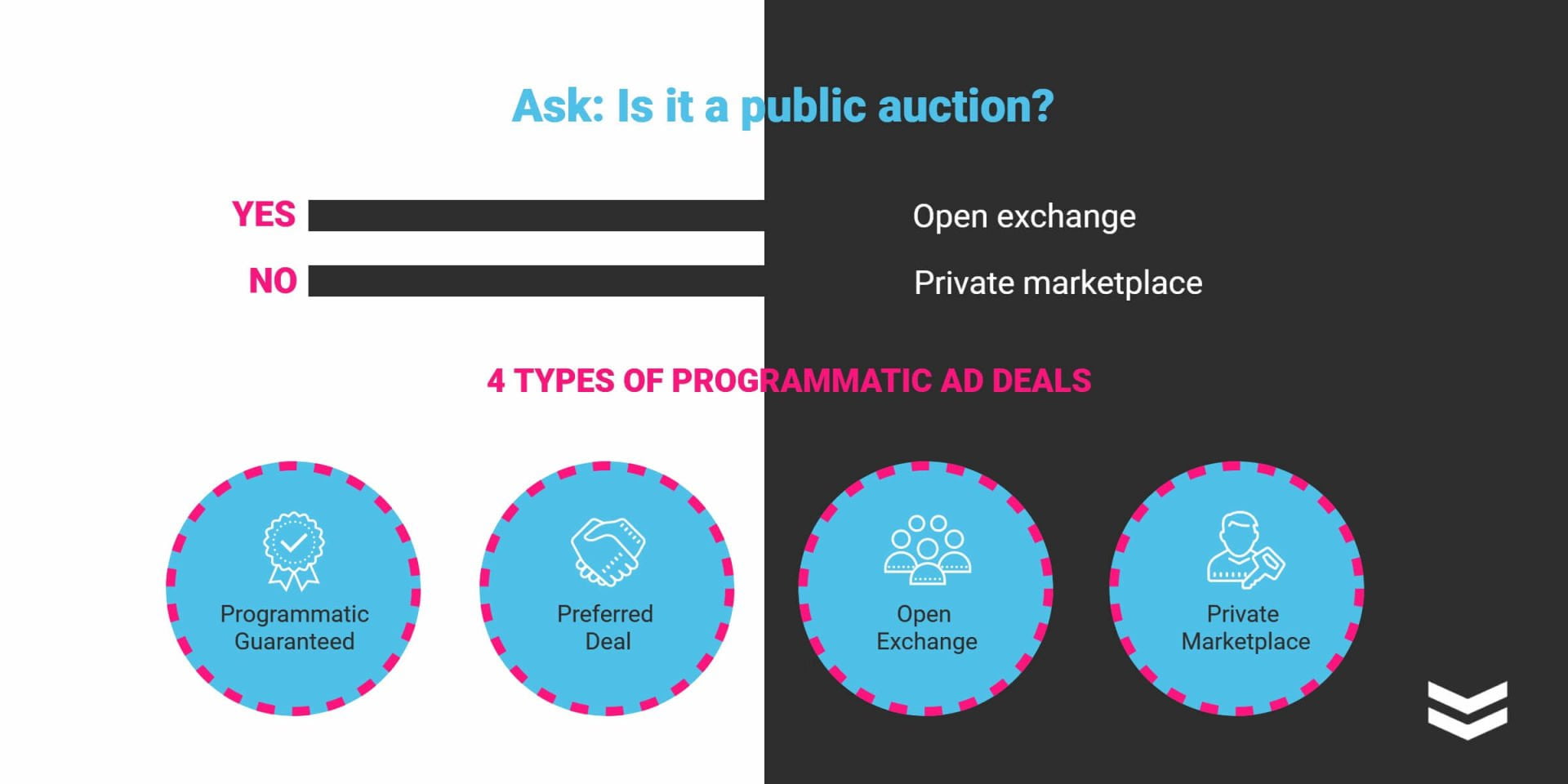
#1: Open Exchange
#2: Private Marketplace
A private marketplace or PMP as it’s called, is an exclusive marketplace where publishers offer premium ad inventory to select advertisers.
To understand what type of Real-Time Bidding (RTB) is happening, ask the question – is it a public auction? If it isn’t, there are private deals in play.
Photo by NESA by Makers on Unsplash
4 Types of Programmatic Ad Deals
#1: Programmatic Guaranteed
A Programmatic Direct deal that is pre-negotiated with a specific publisher, and is therefore exclusive. Fixed parameters are struck, and long term relationships are possible.
#2: Preferred Deal
#3: Open Exchange
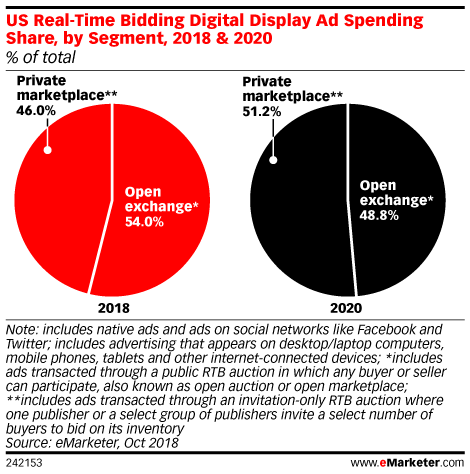
#4: Private Marketplace
Real-Time Bidding that happens in a closed, private marketplace where publishers invite specific buyers to bid on their available inventory.
When looking at Programmatic Direct vs RTB, you need to see them as different sides of the same coin. Now that you understand the real differences between them, making deals will be easier.
Each type of deal has pros and cons, but brands have found success across the board. It’s a good idea to discuss which of these deals will best suit your upcoming campaign’s needs with your advertising partner.
What Have We Learned?
Programmatic Direct:
The direct sale of guaranteed advertising between a publisher and advertiser.
It must be an automated process.
It is a direct sell.
The advertising has to be guaranteed.
Real-Time Bidding:
Online ad inventory being sold and bought through real-time, automated auctions.
Made up of: Advertisers, Publishers and Ad Exchanges.
Ad buyers use a Demand Side Platform (DSP) to buy ad space.
Publishers make ad space available for purchase through Supply Side Platforms (SSP).
Advertisers (DSP) and Publishers (SSP) are connected through ad exchanges and real-time auctions are ran. Advertisers try to get the best ad space within their budget and the publisher gets the highest bid.
The main difference: RTB uses an auction model, whereas Programmatic Direct DOES NOT.
4 Types of Programmatic Ad Deals
Programmatic Direct and Real-Time Bidding combined makes up the 4 types of programmatic advertising deals.
Programmatic Guaranteed (Programmatic Direct): a direct deal where factors such as impressions, prices and positions are set in stone.
Preferred Deal (Programmatic Direct): another type of direct deal but has unreserved ad inventory. Price is set but the amount isn’t guaranteed. (this type is similar to Private Marketplaces, where advertisers get first access before reaching an agreement).
Private Marketplace (RTB): publishers offer premium ad inventory exclusively to select advertisers.
Open Exchange (RTB): an equal opportunity exchange public marketplace. This is where advertisers bid on ad impressions that publishers put in the auction.
18 Benefits of Programmatic Media Buying
If you’re looking for ideas or content to inform your programmatic ad strategy, or to justify moving to a new Demand Side Platform (DSP) for improved results, this post is a solid resource.The benefits of programmatic media buying for your brand.More specifically,...
7 Ways to Create Content that Helps to Achieve Your Business Goals
Content is one of the most important things brands need to thrive in the digital world.It helps companies in different ways, such as building trust, increasing brand awareness, driving website traffic, and even generating leads. In this digital world, content has now...
Google Privacy Sandbox Explained
Ch-ch-changes: recently, there’s been a lot of technology innovations and policy changes shaking up the ad tech landscape, including the introduction of the Google Privacy Sandbox.Recently, movers and shakers of the internet age, such as Apple, are moving towards...









